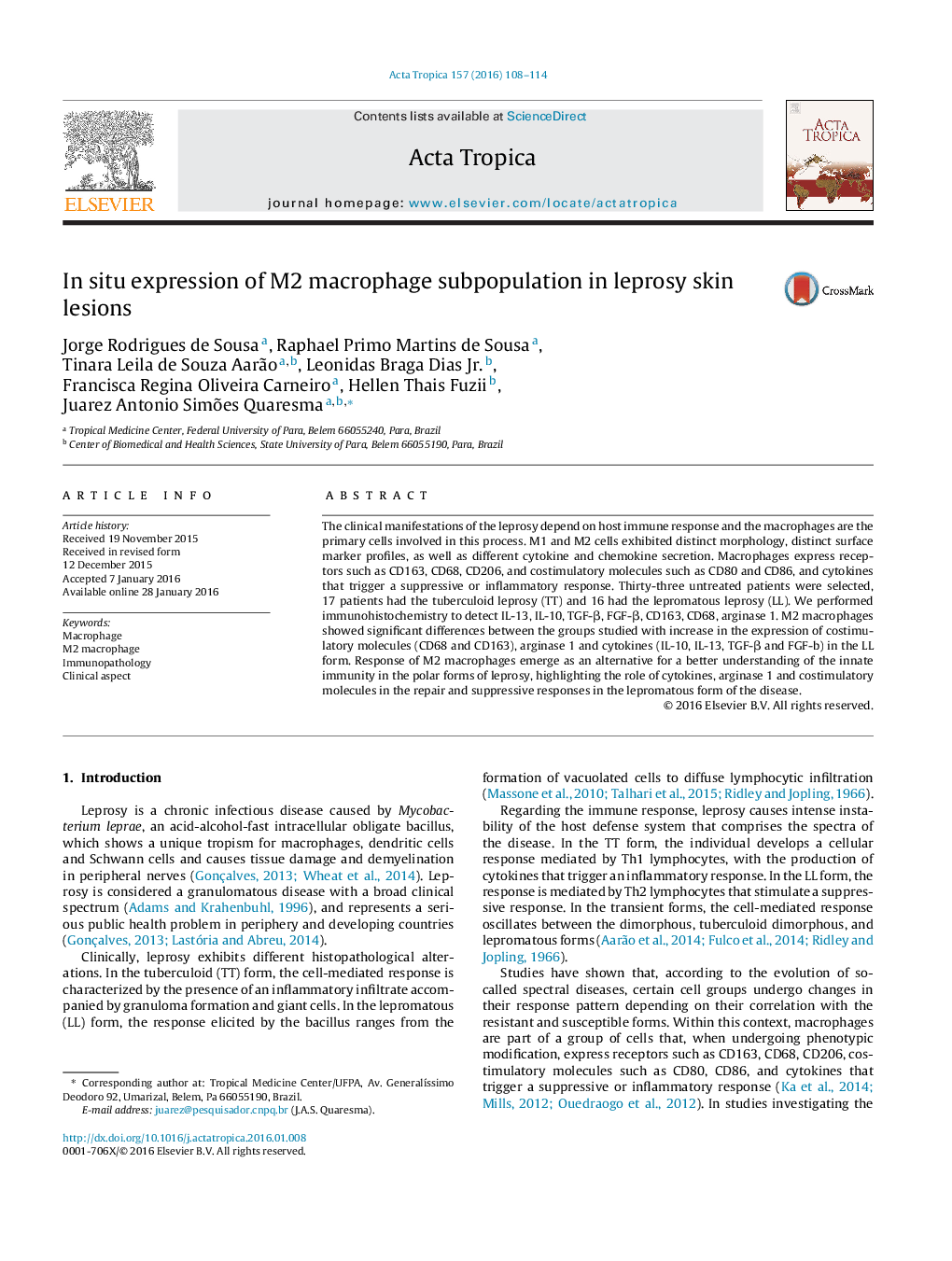| Article ID | Journal | Published Year | Pages | File Type |
|---|---|---|---|---|
| 6126640 | Acta Tropica | 2016 | 7 Pages |
Abstract
The clinical manifestations of the leprosy depend on host immune response and the macrophages are the primary cells involved in this process. M1 and M2 cells exhibited distinct morphology, distinct surface marker profiles, as well as different cytokine and chemokine secretion. Macrophages express receptors such as CD163, CD68, CD206, and costimulatory molecules such as CD80 and CD86, and cytokines that trigger a suppressive or inflammatory response. Thirty-three untreated patients were selected, 17 patients had the tuberculoid leprosy (TT) and 16 had the lepromatous leprosy (LL). We performed immunohistochemistry to detect IL-13, IL-10, TGF-β, FGF-β, CD163, CD68, arginase 1. M2 macrophages showed significant differences between the groups studied with increase in the expression of costimulatory molecules (CD68 and CD163), arginase 1 and cytokines (IL-10, IL-13, TGF-β and FGF-b) in the LL form. Response of M2 macrophages emerge as an alternative for a better understanding of the innate immunity in the polar forms of leprosy, highlighting the role of cytokines, arginase 1 and costimulatory molecules in the repair and suppressive responses in the lepromatous form of the disease.
Related Topics
Life Sciences
Immunology and Microbiology
Parasitology
Authors
Jorge Rodrigues de Sousa, Raphael Primo Martins de Sousa, Tinara Leila de Souza Aarão, Leonidas Braga Jr., Francisca Regina Oliveira Carneiro, Hellen Thais Fuzii, Juarez Antonio Simões Quaresma,
